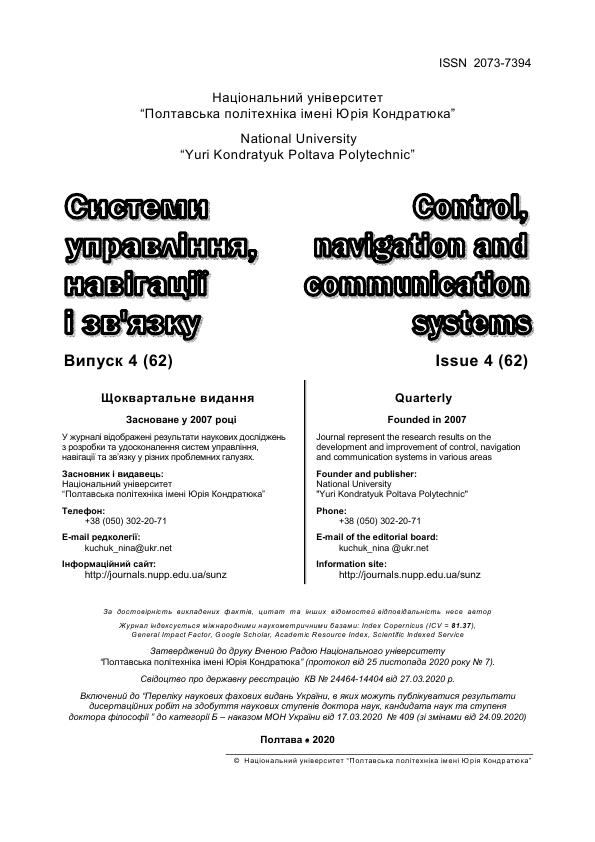ТРАНЗАКЦІЇ І БЛОКУВАННЯ, РІВНІ ІЗОЛЬОВАНОСТІ ТРАНЗАКЦІЙ
DOI:
https://doi.org/10.26906/SUNZ.2020.4.073Ключові слова:
неузгодженість даних, транзакції, версіонування, блокування, рівні ізольованості транзакцій, читання незафіксованих даних, читання фіксованих даних, повторюваність читання, впорядкованістьАнотація
Предметом дослідження є ефективність використання рівнів ізольованості транзакцій. Метою даної статті є визначення доцільності використання розповсюджених рівнів ізольованості транзакцій, які впливають на блокування, для запобігання виникнення неузгодженості даних (втрачене оновлення, «брудне» читання, неповторюване читання, фантомне читання) при паралельному виконані транзакцій. Були отримані наступні результати. Одночасно може бути встановлений тільки один параметр рівня ізольованості транзакції, який продовжує діяти для поточного з'єднання до тих пір, поки не буде явно змінений. Коли для транзакції змінюється рівень ізоляції, ресурси, які зчитуються після зміни, захищаються відповідно до правил нового рівня. Ресурси, які зчитуються до зміни, залишаються захищеними відповідно до правил попереднього рівня. Системи управління базами даних, які забезпечують транзактивність, не завжди підтримують всі розглянуті чотири рівні ізольованості транзакцій, а також можуть вводити додаткові рівні. Висновки. Використовуючи високий рівень ізольованості (впорядкованість), можна захистити одну транзакцію від впливу іншої, але за рахунок істотного збитку для продуктивності бази даних. На цьому рівні результати паралельного виконання транзакцій для бази даних у більшості випадків можна вважати такими, що збігаються з послідовним виконанням тих же транзакцій (по черзі в будь-якому порядку). З іншого боку, низький рівень ізоляції (читання незафіксованих даних) транзакції породжує проблеми з неузгодженістю даних, забезпечуючи при цьому більш високу продуктивність
Завантаження
Посилання
Фиайли К. SQL. Москва: ДМК Пресс, 2013, 456 с.
Connolly T., Begg C. Database Systems A Practical Approach to Design, Implementation, and Management: Global Edition. Boston: Pearson Education, 2014, 1440 p.
Elmasri R., Navathe S.B. Fundamentals of Database Systems. Boston: Addison Wesley, 2016, 1272 p.
Кен Хендерсон, Профессиональное руководство по SQL Server. Структура и реализация. Москва: Вильямс, 2006, 1056 с.
Coronel C., Morris S. Database system: Design, Implementation, & Management: 13th Edition. Boston: Cengage, 2019, 802 p.
Davidson L., Moss J. Pro SQL Server Relational Database Design and Implementation: Fifth Edition. New York: Apress, 2012, 791 p.
Pavlovic Z., Veselica M. Oracle Database 12c Security Cookbook. Birmingham: Packt publishing, 2016, 358p.
Korotkevitch D. Expert SQL Server Transactions and Locking. Birmingham: Packt publishing, 2018, 320 p.
Nechausov A., Mamusuĉ I., Kuchuk N. Synthesis of the air pollution level control system on the basis of hyperconvergent infrastructures. Сучасні інформаційні системи. 2017. Т. 1, No 2. С. 21 – 26. DOI: https://doi.org/10.20998/2522-9052.2017.2.04
Гайдаржи В., Ізварін І. Бази даних в інформаційних системах. Київ: Університет «Україна», 2018, 418 с.




